Abstract
Phototropic responses to broadband far red (FR) radiation were investigated in fully de-etiolated seedlings of a long-hypocotyl mutant (lh) of cucumber (Cucumis sativus L.), which is deficient in phytochrome-B, and its near isogenic wild type (WT). Continuous unilateral FR light provided against a background of white light induced negative curvatures (i.e. bending away from the FR light source) in hypocotyls of WT seedlings. This response was fluence-rate dependent and was absent in the lh mutant, even at very high fluence rates of FR. The phototropic effect of FR light on WT seedlings was triggered in the hypocotyls and occurred over a range of fluence rates in which FR was very effective in promoting hypocotyl elongation. FR light had no effect on elongation of lh-mutant hypocotyls. Seedlings grown in the field showed negative phototropic responses to the proximity of neighboring plants that absorbed blue (B) and red light and back-reflected FR radiation. The bending response was significantly larger in WT than in lh seedlings. Responses of WT and lh seedlings to lateral B light were very similar; however, elimination of the lateral B light gradients created by the proximity of plant neighbors abolished the negative curvature only in the case of lh seedlings. More than 40% of the total hypocotyl curvature induced in WT seedlings by the presence of neighboring plants was present after equilibrating the fluence rates of B light received by opposite sides of the hypocotyl. These results suggest that: (a) phytochrome functions as a phototropic sensor in de-etiolated plants, and (b) in patchy canopy environments, young seedlings actively project new leaves into light gaps via stem bending responses elicited by the B-absorbing photoreceptor(s) and phytochrome.
Full text
PDF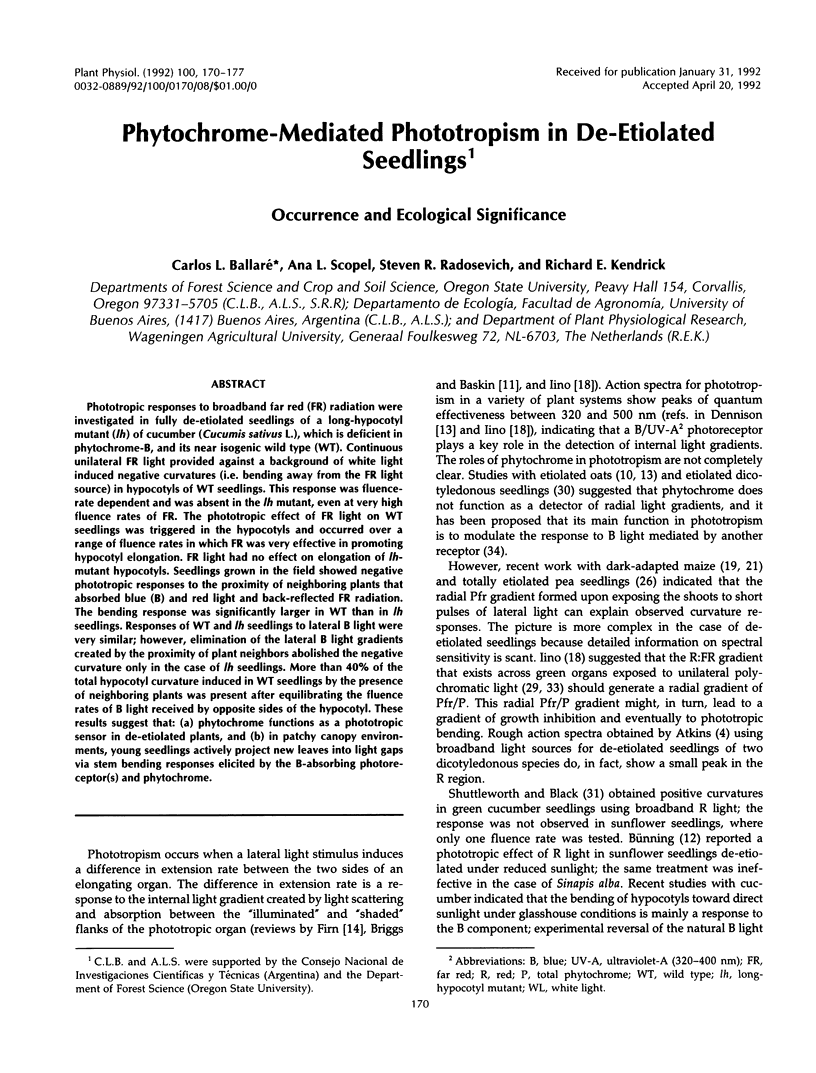
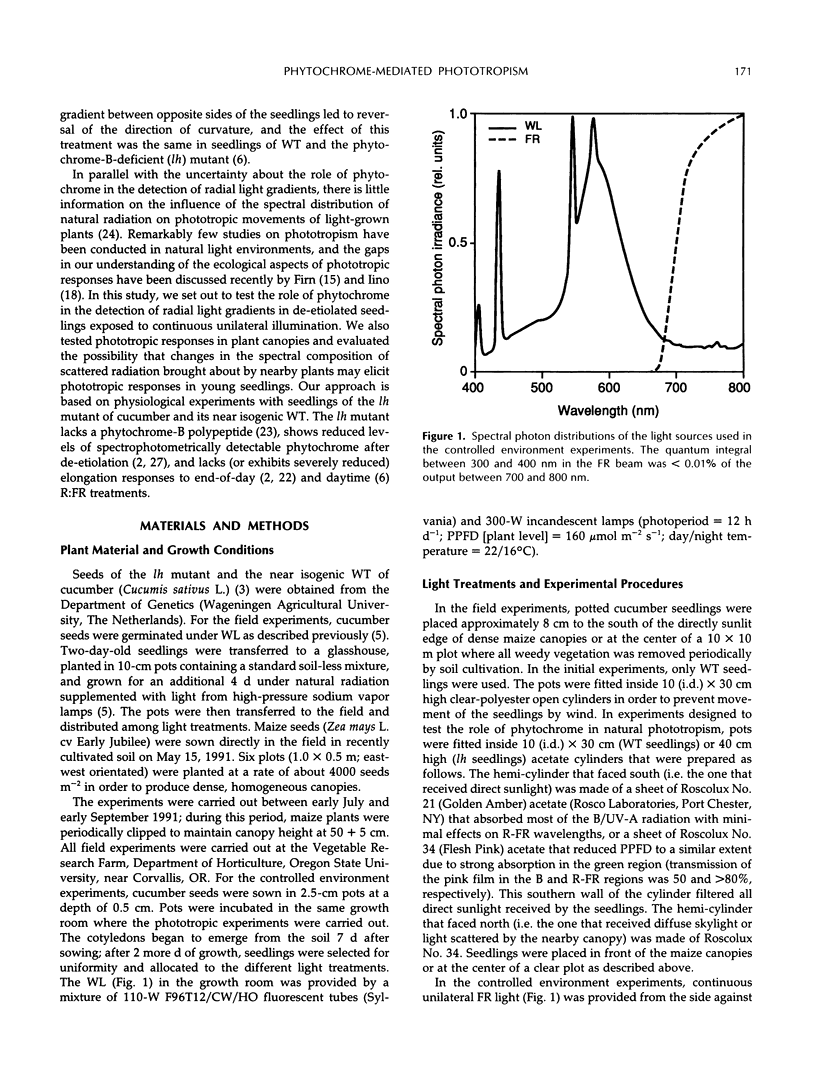
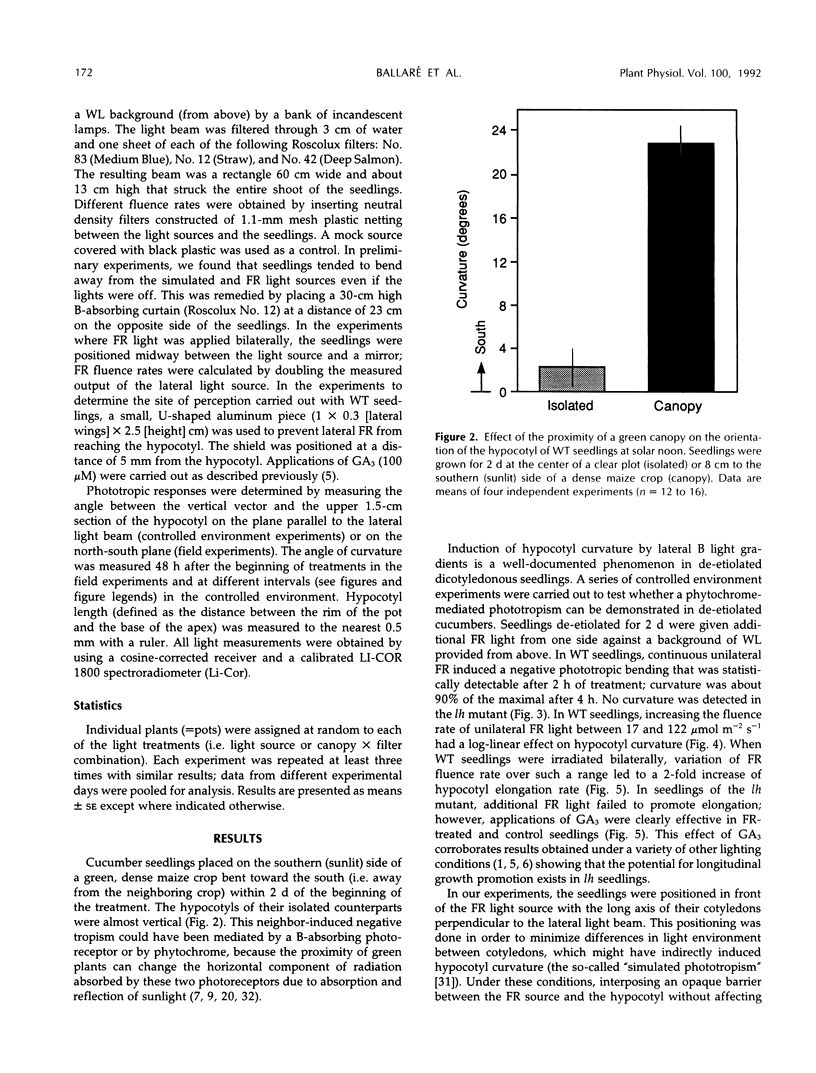
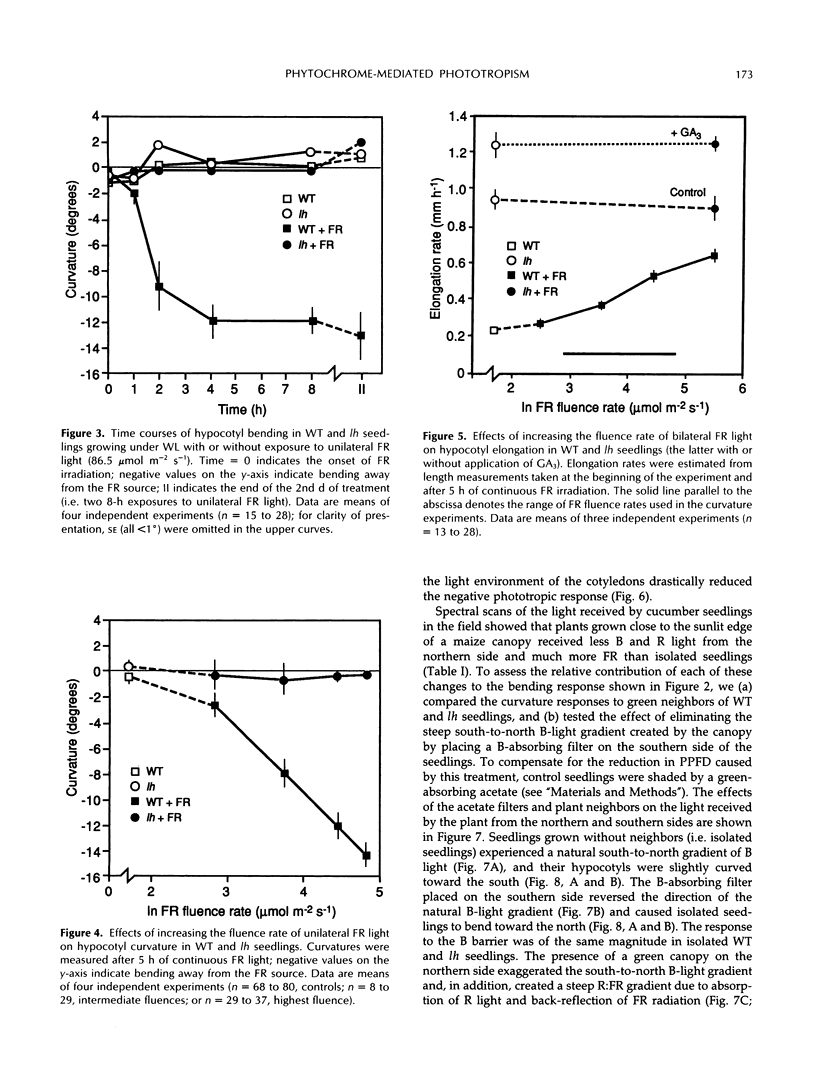
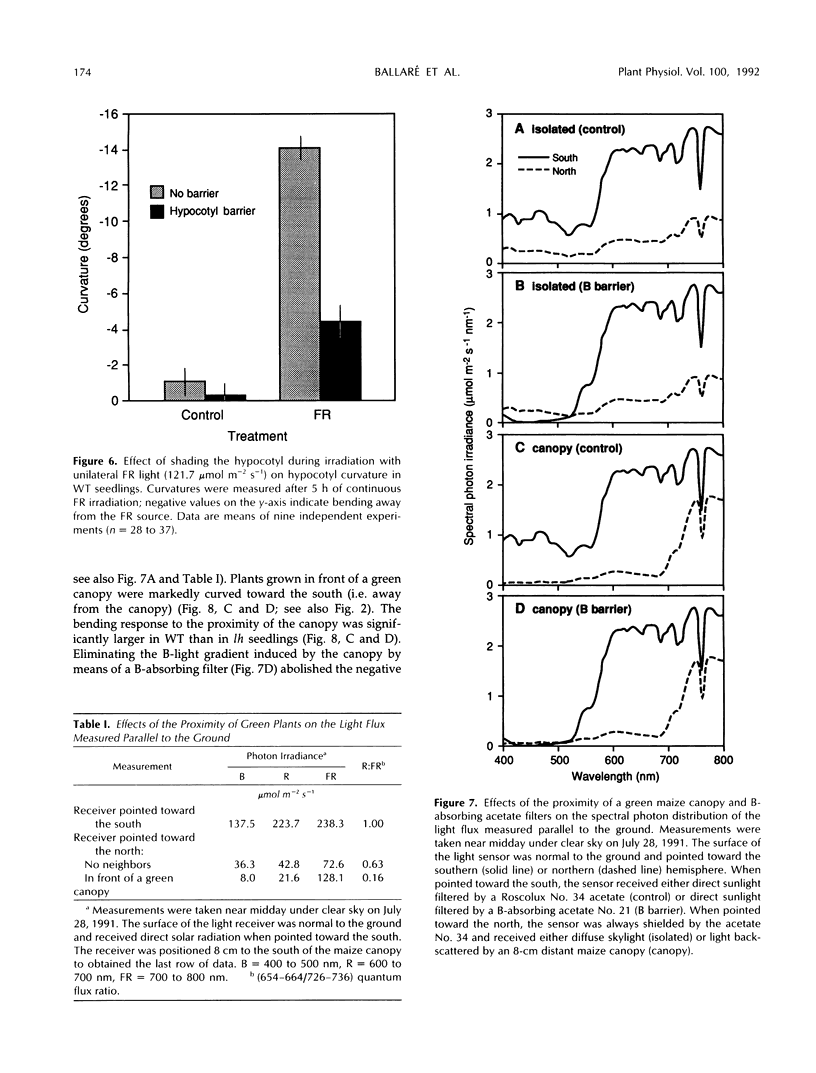
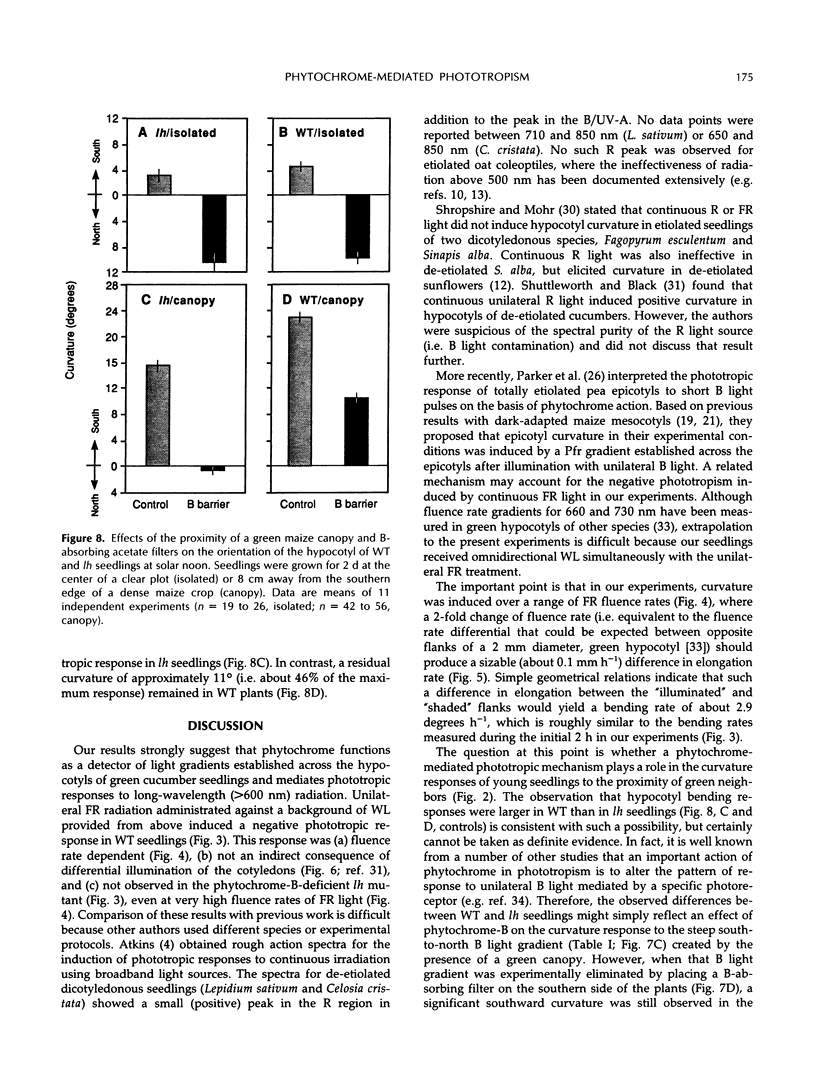
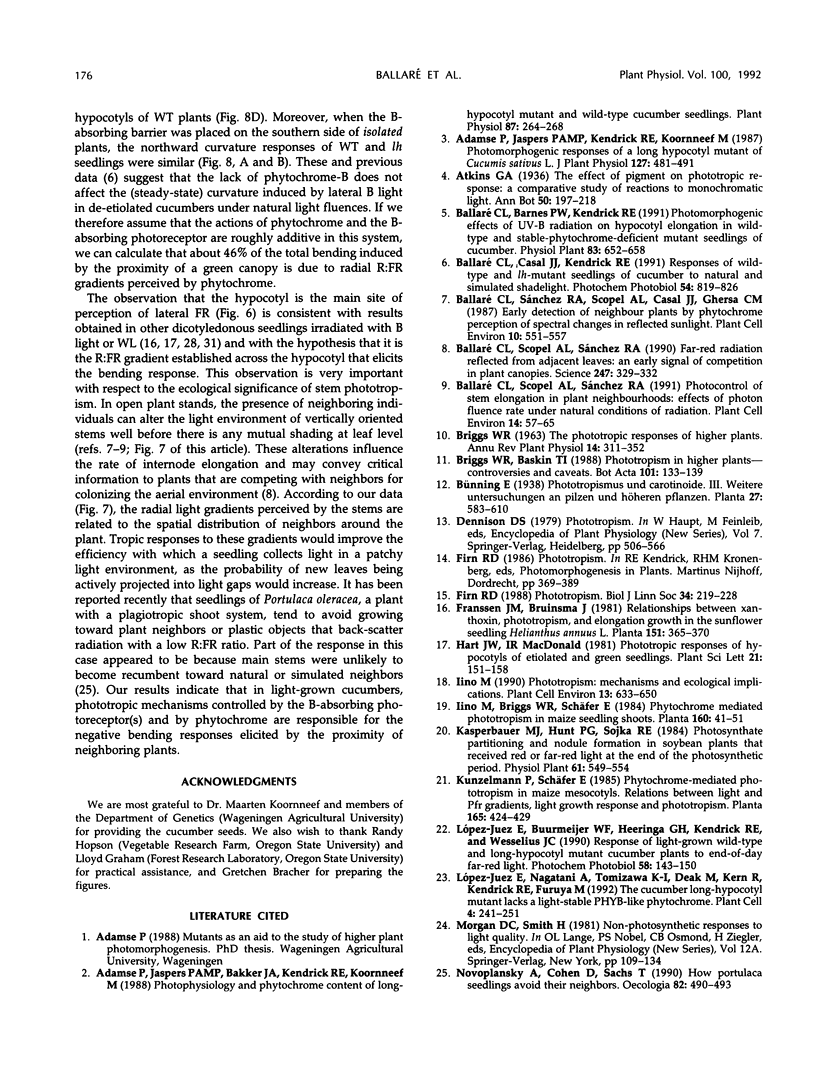
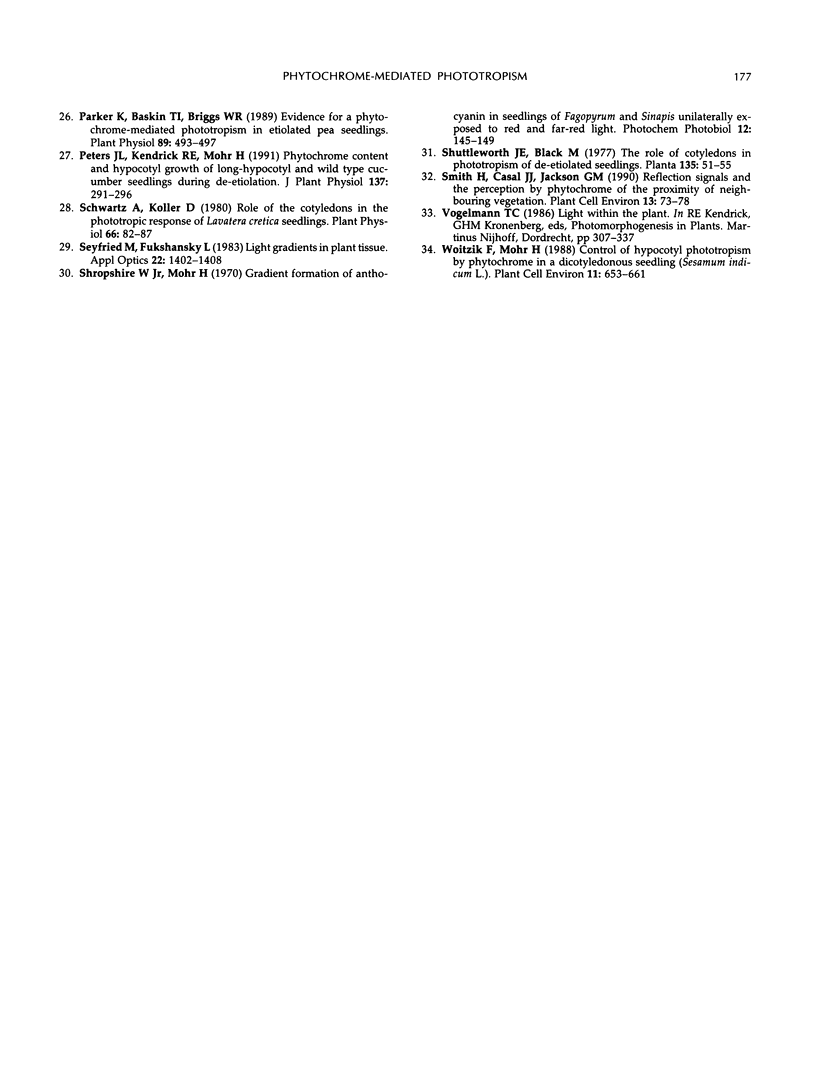
Selected References
These references are in PubMed. This may not be the complete list of references from this article.
- Adamse P., Jaspers P. A., Bakker J. A., Kendrick R. E., Koornneef M. Photophysiology and phytochrome content of long-hypocotyl mutant and wild-type cucumber seedlings. Plant Physiol. 1988 May;87(1):264–268. doi: 10.1104/pp.87.1.264. [DOI] [PMC free article] [PubMed] [Google Scholar]
- Ballaré C. L., Scopel A. L., Sánchez R. A. Far-red radiation reflected from adjacent leaves: an early signal of competition in plant canopies. Science. 1990 Jan 19;247(4940):329–332. doi: 10.1126/science.247.4940.329. [DOI] [PubMed] [Google Scholar]
- López-Juez E., Nagatani A., Tomizawa K., Deak M., Kern R., Kendrick R. E., Furuya M. The cucumber long hypocotyl mutant lacks a light-stable PHYB-like phytochrome. Plant Cell. 1992 Mar;4(3):241–251. [PMC free article] [PubMed] [Google Scholar]
- Parker K., Baskin T. I., Briggs W. R. Evidence for a phytochrome-mediated phototropism in etiolated pea seedlings. Plant Physiol. 1989 Feb;89(2):493–497. doi: 10.1104/pp.89.2.493. [DOI] [PMC free article] [PubMed] [Google Scholar]
- Schwartz A., Koller D. Role of the Cotyledons in the Phototropic Response of Lavatera cretica Seedlings. Plant Physiol. 1980 Jul;66(1):82–87. doi: 10.1104/pp.66.1.82. [DOI] [PMC free article] [PubMed] [Google Scholar]
- Shropshire W., Jr, Mohr H. Gradient formation of anthocyanin in seedlings of Fagopyrum and Sinapis unilaterally exposed to red and far-red light. Photochem Photobiol. 1970 Aug;12(2):145–149. doi: 10.1111/j.1751-1097.1970.tb06046.x. [DOI] [PubMed] [Google Scholar]


